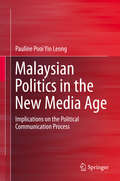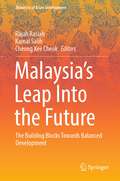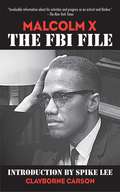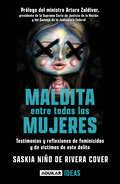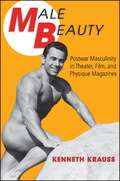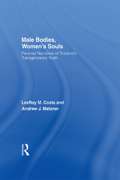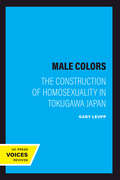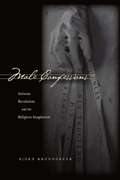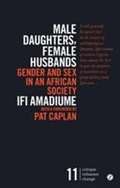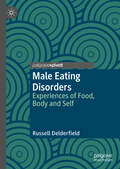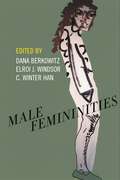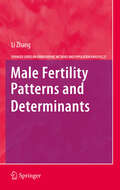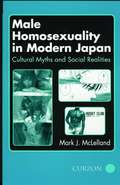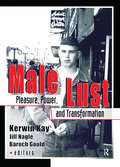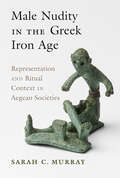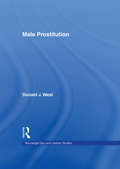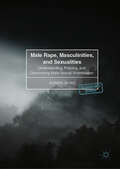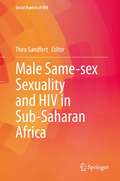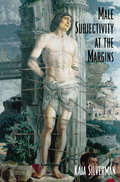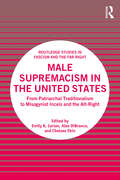- Table View
- List View
Malaysian Politics in the New Media Age: Implications on the Political Communication Process
by Pauline Pooi Yin LeongThis book provides a comprehensive overview of the impact of the Internet on Malaysian politics and how it has played a pivotal role in influencing the country’s political climate. It lays out the background of Malaysia’s political history and media environment, and addresses the ramifications of media-isation for the political process, including political public relations, advertising and online campaigns. The book examines the Internet’s transformative role and effect on Malaysian democracy, as well as its consequences for political actors and the citizenry, such as the development of cyber-warfare, and the rise of propaganda or “fake” news in the online domain. It also investigates the interplay between traditional and new media with regard to the evolution of politics in Malaysia, especially as a watchdog on accountability and transparency, and contributes to the current discourse on the climate of Malaysian politics following the rise of new media in the country. This book is particularly timely in the wake of the 2018 Malaysian general election, and will be of interest to students and researchers in communications, politics, new media and cultural studies.
Malaysia’s Leap Into the Future: The Building Blocks Towards Balanced Development (Dynamics of Asian Development)
by Rajah Rasiah Kamal Salih Cheong Kee CheokThis book presents the future development of Malaysia. It puts together building blocks to achieve a better future. These blocks are poverty and income inequality, population, demography and urbanization, growth and technological progress, education, human capital and skills, finance, labor, the environment, and health care. It examines the reasons for the decline in the agricultural sector with an emphasis on food security. It discusses Malaysia’s economic growth and structural change compared to some of the Northeast East Asian and Southeast Asian countries. It explains the projections of population and demographic change and its bearing on government policies. It evaluates the country’s education sector and discusses the strategies to improve its role in the country further. It argues for replacing ethnic-based approaches with a needs-based system for the future direction to build a plural Malaysia. This insightful book is of interest across several fields, including demography, economic development, and urbanization.
Malcolm X: The FBI File
by Clayborne Carson Spike Lee David GallenThe FBI has made possible a reassembling of the history of Malcolm X that goes beyond any previous research. From the opening of his file in March of 1953 to his assassination in 1965, the story of Malcolm X's political life is a gripping one. Shortly after he was released from a Boston prison in 1953, the FBI watched every move Malcolm X made. Their files on him totaled more than 3,600 pages, covering every facet of his life. Viewing the file as a source of information about the ideological development and political significance of Malcolm X, historian Clayborne Carson examines Malcolm's relationship to other African-American leaders and institutions in order to define more clearly Malcolm's place in modern history. With its sobering scrutiny of the FBI and the national policing strategies of the 1950s and 1960s, Malcolm X: The FBI File is one of a kind: never before has there been so much material on the assassination of Malcolm X in one conclusive volume.
Maldita entre todas las mujeres: Testimonios y reflexiones de feminicidios y de victimas de este delito
by Saskia Niño de RiveraNo es maldita la mujer asesinada porque era malvada o perversa, sino porque cayó sobre ella la maldición de ser víctima de un feminicida; maldita porque sobre su muerte se abrieron las horas más trágicas y dolorosas para su familia. Más de una decena de mujeres es asesinada a diario en México. Y con cada muerte se abre una herida profunda en sus familias que nunca cierra ni deja de doler. ¿Por qué se mata a las mujeres en este país? ¿Cómo viven las familias después de esta tragedia? Saskia Niño de Rivera ofrece en este libro de testimonios y revelaciones sin precedentes las respuestas y las explicaciones para entender desde lo más hondo este delito y el purgatorio que desencadena. A partir de las confesiones de agresores de mujeres y feminicidas, podemos saber de forma directa las causas y contextos de estas muertes, cómo fue la infancia de los perpetradores, quién los educó, en qué momento la violencia que soportaron se convirtió en estigma. Y, en consecuencia, qué suplicio viven las madres de las mujeres violentadas, por qué el duelo se agudiza cuando empiezan las investigaciones y se enfrentan a la insensibilidad de juezas, ministerios públicos, policías, funcionarias o abogados: ¿por qué como sociedad nos hemos vuelto tan indiferentes? Maldita entre todas las mujeres es una obra terrible y enternecedora que ahonda en las vidas de los criminales y las acciones de quienes buscan la justicia para sus hijas, madres o hermanas muertas. Con una visión sensible y muy humana, el libro confirma que hoy más que nunca debemos entender intensamente el delito para evitarlo, no se trata de justificar ni revictimizar, urge una mirada consciente para también decir basta a la corrupción, impunidad e ineptitud del Sistema de Impartición de Justicia de México.
Maldito estereotipo
by Yolanda DomínguezUn análisis crítico sobre por qué funcionan los estereotipos y qué hacer para combatir las desigualdades que generan En Maldito estereotipo, Yolanda Domínguez analiza de manera crítica, irónica y reveladora distintos aspectos culturales y sociales relacionados con la influencia de las imágenes y nos explica cómo y por qué funcionan los estereotipos, qué se esconde tras la fotografía de moda, cuál es el papel que tienen las imágenes en la construcción de nuestra identidad y qué pautas podemos seguir para utilizarlas de una manera más comprometida, que contribuya a combatir la desigualdad. «No consideramos la imagen como un signo que hay que interpretar e incluso contrastar, sino que la consideramos directamente como la realidad y ese es uno de sus mayores peligros. Consumimos tal cantidad de imágenes que aplicamos un nivel de lectura muy superficial basado en lo emocional, lo que nos mantiene en un grado muy básico de entendimiento, más animal y menos racional […] La repetición de los códigos visuales heredados, sumada a la necesidad de simplificar, da lugar a los estereotipos que arrastran y refuerzan juicios morales, limitando nuestras posibilidades y la forma de relacionarnos e incluso llegando a provocar lo que representan.»
Male Beauty: Postwar Masculinity in Theater, Film, and Physique Magazines
by Kenneth KraussIn the decades that followed World War II, Americans searched for and often founds signs of a new masculinity that was younger, sensitive, and sexually ambivalent. Male Beauty examines the theater, film, and magazines of the time in order to illuminate how each one put forward a version of male gendering that deliberately contrasted, and often clashed with, previous constructs. This new postwar masculinity was in large part a product of the war itself. The need to include those males who fought the war as men—many of whom were far younger than what traditional male gender definitions would accept as "manly"—extended the range of what could and should be thought of as masculine. Kenneth Krauss adds to this analysis one of the first in-depth examinations of how males who were sexually attracted to other males discovered this emerging concept of manliness via physique magazines.
Male Bodies, Women's Souls: Personal Narratives of Thailand's Transgendered Youth
by LeeRar CostaGet a detailed look at the Thai sex/gender system-through analysis of the personal stories from transgendered youth in ThailandThe Thai term sao braphet song (a "second type of woman") describes males who reject the gender of masculinity for femininity. Male Bodies, Women&’s Souls: Personal Narratives of Thailand&’s Transgendered Youth uses the narrative method, stories in the words of these "second type of women" to analyze these transgendered experiences. This previously ignored perspective of the Thai sex/gender system gained through this theoretical and methodological approach offers students and general readers a rich, more readily accessible foundation of knowledge about gendered subjectivity and sex/gender systems.Male Bodies, Women&’s Souls: Personal Narratives of Thailand&’s Transgendered Youth features in-depth, autobiographical life histories from individual Thai transgendered youth. Life stories, told in the participants&’ own words, provides an engaging, at times touching, always insightful look at Thai culture&’s sex/gender system. The authors then expertly analyze the narratives to illuminate common themes and constructions within this group, allowing an opportunity for contrast and discussion on transgender experiences in other nations. Male Bodies, Women&’s Souls: Personal Narratives of Thailand&’s Transgendered Youth analyzes the major themes in the stories, including: identities definitions and descriptive labels etiologies of sao braphet song-ness the notion of acceptance narrator motivations for participating in the projectMale Bodies, Women&’s Souls: Personal Narratives of Thailand&’s Transgendered Youth is illuminating, reflective reading for educators, undergraduate students, graduate students, researchers, or anyone interested in discovering more about transgenderism in a specific cultural context.
Male Colors: The Construction of Homosexuality in Tokugawa Japan
by Gary LeuppTokugawa Japan ranks with ancient Athens as a society that not only tolerated, but celebrated, male homosexual behavior. Few scholars have seriously studied the subject, and until now none have satisfactorily explained the origins of the tradition or elucidated how its conventions reflected class structure and gender roles. Gary P. Leupp fills the gap with a dynamic examination of the origins and nature of the tradition. Based on a wealth of literary and historical documentation, this study places Tokugawa homosexuality in a global context, exploring its implications for contemporary debates on the historical construction of sexual desire.Combing through popular fiction, law codes, religious works, medical treatises, biographical material, and artistic treatments, Leupp traces the origins of pre-Tokugawa homosexual traditions among monks and samurai, then describes the emergence of homosexual practices among commoners in Tokugawa cities. He argues that it was "nurture" rather than "nature" that accounted for such conspicuous male/male sexuality and that bisexuality was more prevalent than homosexuality. Detailed, thorough, and very readable, this study is the first in English or Japanese to address so comprehensively one of the most complex and intriguing aspects of Japanese history.
Male Confessions: Intimate Revelations and the Religious Imagination
by Björn KrondorferMale Confessions examines how men open their intimate lives and thoughts to the public through confessional writing. This book examines writings--by St. Augustine, a Jewish ghetto policeman, an imprisoned Nazi perpetrator, and a gay American theologian--that reflect sincere attempts at introspective and retrospective self-investigation, often triggered by some wounding or rupture and followed by a transformative experience. Krondorfer takes seriously the vulnerability exposed in male self-disclosure while offering a critique of the religious and gendered rhetoric employed in such discourse. The religious imagination, he argues, allows men to talk about their intimate, flawed, and sinful selves without having to condemn themselves or to fear self-erasure. Herein lies the greatest promise of these confessions: by baring their souls to judgment, these writers may also transcend their self-imprisonment.
Male Daughters, Female Husbands: Gender and Sex in an African Society
by Ifi AmadiumeIn 1987, more than a decade before the dawn of queer theory, Ifi Amadiume wrote Male Daughters, Female Husbands, to critical acclaim. This compelling and highly original book frees the subject position of 'husband' from its affiliation with men, and goes on to do the same for other masculine attributes, dislocating sex, gender and sexual orientation. <P><P>Boldly arguing that the notion of gender, as constructed in Western feminist discourse, did not exist in Africa before the colonial imposition of a dichotomous understanding of sexual difference, Male Daughters, Female Husbands examines the structures in African society that enabled people to achieve power, showing that roles were not rigidly masculinized nor feminized. At a time when gender and queer theory are viewed by some as being stuck in an identity-politics rut, this outstanding study not only warns against the danger of projecting a very specific, Western notion of difference onto other cultures, but calls us to question the very concept of gender itself.
Male Eating Disorders: Experiences of Food, Body and Self
by Russell DelderfieldThis book takes a novel approach to the study of male eating disorders – an area that is often dominated by clinical discourses. The study of eating disorders in men has purportedly suffered from a lack of dedicated attention to personal and socio-cultural aspects. Delderfield tackles this deficiency by spotlighting a set of personal accounts written by a group of men who have experiences of disordered eating. The text presents critical interpretations that aim to situate these experiences in the social and cultural context in which these disorders occur. This discursive work is underpinned by an eclectic scholarly engagement with social psychology and sociology literature around masculinities, embodiment and fatness, belonging, punishment, stigma, and control; leading to understandings about relationships with food, body and self. This is undertaken with a reflexive element, as the personal intersects with the professional. This text will appeal to students, scholars and clinicians in social sciences, humanities, and healthcare studies, including public health.
Male Femininities
by C. Winter Han Dana Berkowitz Elroi J. WindsorInnovative essays that explore how men perform femininity and what femininity looks like without womenWhat counts as “male femininity”? Is it simply men behaving in effeminate ways or is it the absence of masculinity? Male Femininities presents a nuanced, critical collection of essays that highlight the extent to which male femininities are neither an imitation of femaleness nor an emptying of masculinity. These innovative essays focus on both gay and straight men, and transmasculine and genderqueer people in their construction and performance of femininity, thereby revealing the possibilities that open up when we critically examine femininity without women. Male Femininities asks, What does femininity look like for men?The contributors—highly regarded scholars and rising stars—cover a range of topics, including drag queens, cosmetic enhancements, trans fertility, and gender-non-conforming childhoods. Male Femininities illuminates what happens when we decouple femininity from female bodies and how even the smallest cracks and fissures in the normative order can disrupt, challenge, and in some cases reaffirm our existing sex-gender regime. This volume pluralizes the concept of male femininities and leads readers through an exploration of how gender, sex, and sexuality are manifested in the United States today.
Male Fertility Patterns and Determinants
by Li ZhangThis book discusses the biological, methodological and sociological issues that have caused men to be overlooked in demographic and sociological literature of fertility. It explores the patterns and determinants of male fertility and studies male fertility rates as compared to those of females in 43 countries and places, over time. Data used in the aggregate level analysis come from multiple sources, including the 2001 United Nations Demographic Yearbook, the 1964 to 2004 Taiwan-Fukien Demographic Yearbooks, and National Statistics Reports by the Statistics Bureau of Republic of China. To explore male fertility determinants, the book analyzes individual data from the 2002 National Survey of Family Growth (NSFG) in the United States. The findings presented here demonstrate that male fertility differs from female fertility in both rates and determinants, which suggests that female fertility cannot fully represent human fertility.
Male Homosexuality in Children’s Literature, 1867–1918: The Young Uranians (ISSN)
by Eric L. TribunellaIn his 1908 cultural and historical study of homosexuality titled The Intersexes: A History of Similisexualism as a Problem in Social Life, Edward Irenæus Prime-Stevenson includes a section on homosexual juvenile fiction, perhaps the first attempt to identify a body of children’s literature about male homosexuality in English. Known for pioneering the explicitly gay American novel for adults, Stevenson was also one of the first thinkers to take seriously the possibility and value of homosexual children, whom he called "young Uranians." This book takes as its starting point Stevenson’s catalog of homosexual boy books around the turn of the century and offers a critical examination of these works, along with others by gay writers who wrote for children from the mid-nineteenth century through the end of World War I. Stevenson’s list includes Eduard Bertz, Howard Sturgis, Horace Vachell, and Stevenson himself—to which Horatio Alger, John Gambril Nicholson, and E.F. Benson are added. Read alongside major developments in English- and German-language sexology, these boy books can be understood as participating in the construction and dissemination of the discourse of sexuality and as constituting the figure of the young Uranian as central to modern gay identity.
Male Homosexuality in Children’s Literature, 1867–1918: The Young Uranians (Studies in Childhood, 1700 to the Present)
by Eric L. TribunellaIn his 1908 cultural and historical study of homosexuality titled The Intersexes: A History of Similisexualism as a Problem in Social Life (1908), Edward Irenæus Prime-Stevenson includes a section on homosexual juvenile fiction, perhaps the first attempt to identify a body of children’s literature about male homosexuality in English. Known for pioneering the explicitly gay American novel for adults, Stevenson was also one of the first thinkers to take seriously the possibility and value of homosexual children, whom he called "young Uranians." This book takes as its starting point Stevenson’s catalog of homosexual boy books around the turn of the century and offers a critical examination of these works, along with others by gay writers who wrote for children from the mid-nineteenth century through the end of World War I. Stevenson’s list includes Eduard Bertz, Howard Sturgis, Horace Vachell, and Stevenson himself—to which Horatio Alger, John Gambril Nicholson, and E.F. Benson are added. Read alongside major developments in English- and German-language sexology, these boy books can be understood as participating in the construction and dissemination of the discourse of sexuality and as constituting the figure of the young Uranian as central to modern gay identity.
Male Homosexuality in Modern Japan: Cultural Myths and Social Realities
by Mark J. McLellandThis book is the first to look at the wide range of contrasting images of the gay male body in Japanese popular culture, both mainstream and gay, and relate these images to the experience of an interview sample of Japanese gay men. In so doing, it touches on a number of important issues, including whether there can be a universal 'gay identity' and whether or not strategies developed for increasing gay and lesbian visibility in western countries are appropriate to the social situation in Japan
Male Lust: Pleasure, Power, and Transformation
by Kerwin Brook Jill Nagle Baruch GouldMen from a variety of sexual orientations and ethnic backgrounds overturn myths about male sexuality and desire!Male sexuality comes of age in this provocative collection of personal essays and poetry. Male Lust's nearly 60 contributors explore emotional, social, and political aspects of sex and desire from a diversity of backgrounds, perspectives, and sexual orientations. Answering the long-standing challenge for men to finally theorize the complexity of their own sexual desires, Male Lust (a 2001 Lambda Gay Studies Literary Award Finalist) delves into topics such as commercial sex, sadomasochism, feminism, and white supremacy without lapsing into reactionary, knee-jerk or misogynist stances. This book offers a positive sexual vision that moves far beyond the narrow messages offered in mainstream media. Male Lust reveals thoughtful, detailed realities of gay, straight, bisexual, transgender, and same-gender-loving men's personal experiences with sex that lurk behind the stereotypes. Among the many topics that the essays, stories, and poems herein chronicle are: various facets of men's and women's experience with commercial sex, both as consumers and providers social and hormonal phenomena involved in transitioning from female to male handling the impact of white supremacy on male lust as a man of color the transformational possibilities of S/M women's responses to the lusts of the men in their lives coming of age with a “deviant” gender or sexual orientation healing from rape and other forms of sexual abuse coming to terms with loving and desiring women within a misogynist culture lust and desire within a disabled bodyTogether, the contributors break the noisy silence surrounding male lust, challenge the dominant images of men as unemotional sexual predators, and expose the live, beating hearts, minds, and souls of real men loving, healing, and revealing themselves, each other, and the women in their lives. Male Lust heralds the next generation of thinking men--a must-read for anyone seeking cutting-edge ideas on sexuality and desire.
Male Nudity in the Greek Iron Age: Representation and Ritual Context in Aegean Societies
by Sarah MurrayWhy did the male nude come to occupy such an important place in ancient Greek culture? Despite extended debate, the answer to this question remains obscure. In this book, Sarah Murray demonstrates that evidence from the Early Iron Age Aegean has much to add to the discussion. Her research shows that aesthetics and practices involving male nudity in the Aegean had a complicated origin in prehistory. Murray offers a close analysis of the earliest male nudes from the late Bronze and Early Iron Ages, which mostly take the form of small bronze votive figurines deposited in rural sanctuaries. Datable to the end of the second millennium BCE, these figurines, she argues, enlighten the ritual and material contexts in which nude athletics originated, complicating the rationalizing accounts present in the earliest textual evidence for such practices. Murray's book breaks new ground by reconstructing a scenario for the ritual and ideological origins of nudity in Greek art and culture.
Male Prostitution
by Donald West JHere is the most comprehensive empirical study ever published about male prostitutes and their clients. Written by one of the most distinguished international scholars in psychiatry and criminal justice, this book provides a carefully designed presentation of in-depth interviews with several hundred London “rent boys.” The interviews included a large sample of one-to-one conversations in a private room tape-recorded with the consent of the interviewees. Dr. West and his colleague, Mr. de Villiers, bring you squarely into the everyday lives of male prostitutes and cover little known details of their lives, such as: the drift into homelessness sexual orientation entry into prostitution sexual orientation threats of blackmail, violence, and murder by male prostitutes or their clients attitudes and intentions of the male prostitutes post-prostitution careers, legal and criminology issues personal fears, desires, and interests of male prostitutesEncyclopedic in scope and depth, Male Prostitution never strays from combining high-level research presented in a readily understandable and often entertaining style and incisive insights and issues critical for both the informed layperson and researchers in human sexuality. Dr. West and his colleague provide is a source of unbiased, detailed information on the male sex industry and their clients which is unavailable in any other book published to date.
Male Rape is a Feminist Issue
by Claire CohenThis book seeks to problematize knowledge and practices regarding 'male rape' and its relationship to feminism, examining this issue from a Foucauldian perspective. Feminist constructions of 'male rape' can plausibly be claimed to operate as a 'regime of truth', but one must question whether this is running counter to patriarchy.
Male Rape, Masculinities, and Sexualities: Understanding, Policing, and Overcoming Male Sexual Victimisation (Palgrave Hate Studies)
by Aliraza JavaidThis book critically explores the intersections between male rape, masculinities, and sexualities. It examines the ways in which male rape is policed, responded to, and addressed by state and voluntary agencies in Britain. The book uncovers how notions of gender, sexualities and masculinities shape these agencies’ understanding of male rape and their views of men as victims of rape. Javaid pays particular attention to the police and deconstructs police subculture to consider whether it influences and shapes the ways in which police officers provide services for male rape victims. Grounded in qualitative interviews and data derived from the state and voluntary sector, this book will be invaluable reading for sociologists, criminologists, and social scientists who are keen to learn more about gender, policing, sexual violence and male sexual victimisation.
Male Same-sex Sexuality and HIV in Sub-Saharan Africa (Social Aspects of HIV #7)
by Theo SandfortThis book addresses the impact of HIV on populations of men who have sex with men in Africa and local responses to the issue. It documents the enduring existence of a rich variety of same-sex practices between men. More critically, it analyses how the denial and social rejection of same-sex sexuality, together with the legacy of criminalization by former colonial rulers, has not only fueled the transmission of HIV between men, but has also impeded an effective response. The book also documents some of the outstanding progress that has been made and acknowledges the differences between African countries. Through its focus on lived realities and grassroots activism in Africa, this book will appeal to researchers, policy makers and practitioners alike.
Male Sex Work in the Digital Age: Curated Lives
by Paul RyanThis book explores the lives of male sex workers living in Dublin, Ireland. It focuses on the stories of young Brazilian and Venezuelan migrants who use their micro-celebrity on social media to construct a brand that can be converted into financial advantage within the sex industry. The book focuses on two sites: Grindr, which these men use to build a transient pop-up escort profile that is linked to Instagram, which in turn provides followers with access to a curated digital identity built around consumption. Ryan explores how the muscular body acts as a form of physical and erotic capital providing the raw material of these digital identities as they are broadcast on new online subscription platforms like OnlyFans. Male Sex Work in the Digital Age offers fascinating insights into the role social media plays in (re)creating a new and more flexible understanding of commercial sex. Students and scholars across a range of disciplines, including sociology, gender studies, sexuality studies, LGBTQ studies, media studies and law, will find this book of interest.
Male Subjectivity at the Margins
by Kaja SilvermanThrough the examination of a range of literary and cinematic texts, from William Wyler's classic The Best Years of Our Lives to the novels of Henry James, Silverman offers a bold new look at masculinities which deviate from the social norm.
Male Supremacism in the United States: From Patriarchal Traditionalism to Misogynist Incels and the Alt-Right (Routledge Studies in Fascism and the Far Right)
by Emily K. Carian Alex DiBranco Chelsea EbinMale Supremacism in the United States is a timely editorial collection providing analysis of current patriarchal, misogynistic, and antifeminist threats in the United States, The book theorizes how male supremacism—the system that disproportionately privileges cis men and subordinates women, trans men, and nonbinary people—and its accompanying ideology of male superiority undergird many of the most crucial phenomena of our time. The book examines how male supremacism manifests in three ways: as patriarchal traditionalism, as secular male supremacism, and in its intersections with other systems of oppression. From anti-abortion activism to misogynist incels to the Proud Boys, the collection illustrates how male supremacism plays a vital role in right-wing recruitment and organizing. The volume’s contributions illuminate unique aspects of male supremacist ideology, practice, and culture. Together, they provide a sweeping overview of the development and deployment of male supremacism in the United States. This book will be of value to anyone studying or researching male supremacism, gender, feminism, women’s studies, hate studies, and the far right.
